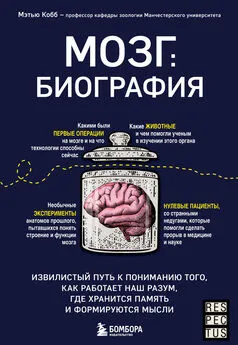Барбара Тверски - Ум в движении [Как действие формирует мысль] [litres]
- Название:Ум в движении [Как действие формирует мысль] [litres]
- Автор:
- Жанр:
- Издательство:Литагент Альпина
- Год:2020
- Город:Москва
- ISBN:978-5-0013-9354-2
- Рейтинг:
- Избранное:Добавить в избранное
-
Отзывы:
-
Ваша оценка:
Барбара Тверски - Ум в движении [Как действие формирует мысль] [litres] краткое содержание
Книга известного когнитивного психолога Барбары Тверски посвящена пространственному мышлению. Это мышление включает в себя конструирование «в голове» и работу с образами в отношении не только физического пространства, но и других его видов – пространств социального взаимодействия и коммуникации, жестов, речи, рисунков, схем и карт, абстрактных построений и бесконечного поля креативности. Ключевая идея книги как раз и состоит в том, что пространственное мышление является базовым, оно лежит в основе всех сфер нашей деятельности и всех ситуаций, в которые мы вовлекаемся.
Доступное и насыщенное юмором изложение серьезного, для многих абсолютно нового материала, а также прекрасные иллюстрации привлекут внимание самых взыскательных читателей. Они найдут в книге как увлекательную конкретную информацию о работе и развитии пространственного мышления, так и важные обобщения высокого уровня, воплощенные в девять законов когниции.
Ум в движении [Как действие формирует мысль] [litres] - читать онлайн бесплатно ознакомительный отрывок
Интервал:
Закладка:
Park, B., & Rothbart, M. (1982). Perception of out-group homogeneity and levels of social categorization: Memory for the subordinate attributes of in-group and out-group members. Journal of Personality and Social Psychology , 42(6), 1051.
Quattrone, G. A. (1986). On the perception of a group’s variability. In S. Worchel & W. Austin (Eds.), The psychology of intergroup relations (pp. 25–48). New York, NY: Nelson-Hall.
Rosch, E., Mervis, C. B., Gray, W. D., Johnson, D. M., & Boyes-Braem, P. (1978). Basic objects in natural categories. Cognitive Psychology , 8, 382–439.
Trope, Y., & Liberman, N. (2010). Construal-level theory of psychological distance. Psychological Review , 117, 440–463.
Асимметричное подобие
Rosch, E. (1975). Cognitive reference points. Cognitive Psychology , 7(4), 532–547.
Tversky, A. (1977). Features of similarity. Psychological Review , 84(4), 327.
Когнитивные карты
Baird, J. C. (1979). Studies of the cognitive representation of spatial relations: I. Overview. Journal of Experimental Psychology: General , 108, 90–91.
Landau, B., Spelke, E., & Gleitman, H. (1984). Spatial knowledge in a young blind child. Cognition , 16, 225–260.
Tolman, E. C. (1948). Cognitive maps in rats and men. Psychological Review , 55, 189–208.
Мир помогает разрешать проблемы с неопределенностью
Tversky, B. (2002). Navigating by mind and by body. In C. Freksa, W. Brauer, C. Habel, & K. F. Wender (Eds.), Spatial cognition III [Lecture Notes in Computer Science] (Vol. 2685). Berlin, Germany: Springer. https://doi.org/10.1007/3–540–45004–1_1.
Мысленное вращение объектов
Shepard, R. N., & Cooper, L. A. (1986). Mental images and their transformations . Cambridge, MA: MIT Press.
Shepard, R. N., & Metzler, J. (1971). Mental rotation of three-dimensional objects. Science , 171, 701–703.
Мысленное вращение часть за частью
Just, M. A., & Carpenter, P. A. (1985). Cognitive coordinate systems: Accounts of mental rotation and individual differences in spatial ability. Psychological Review , 92(2), 137.
Тестирование пространственных способностей с помощью мысленного вращения
Vandenberg, S. G., & Kuse, A. R. (1978). Mental rotations, a group test of three-dimensional spatial visualization. Perceptual and Motor Skills , 47(2), 599–604.
Вращение рук помогает мысленно вращать объекты
Chu, M., & Kita, S. (2008). Spontaneous gestures during mental rotation tasks: Insights into the microdevelopment of the motor strategy. Journal of Experimental Psychology: General , 137(4), 706.
Wexler, M., Kosslyn, S. M., & Berthoz, A. (1998). Motor processes in mental rotation. Cognition , 68(1), 77–94.
Мысленное вращение активирует двигательные зоны мозга
Zacks, J. M. (2008). Neuroimaging studies of mental rotation: A meta-analysis and review. Journal of Cognitive Neuroscience , 20(1), 1–19.
Мысленное вращение собственного тела
Parsons, L. M. (1987). Imagined spatial transformation of one’s body. Journal of Experimental Psychology: General , 116(2), 172.
Parsons, L. M. (1987). Imagined spatial transformations of one’s hands and feet. Cognitive Psychology , 19(2), 178–241.
Zacks, J. M., Ollinger, J. M., Sheridan, M. A., & Tversky, B. (2002). A parametric study of mental spatial transformations of bodies. Neuroimage , 16(4), 857–872.
Zacks, J., Rypma, B., Gabrieli, J. D. E., Tversky, B., & Glover, G. H. (1999). Imagined transformations of bodies: An fMRI investigation. Neuropsychologia , 37(9), 1029–1040.
Zacks, J. M., & Tversky, B. (2005). Multiple systems for spatial imagery: Transformations of objects and bodies. Spatial Cognition and Computation , 5(4), 271–306.
Потеря руки замедляет мысленное вращение руки
Nico, D., Daprati, E., Rigal, F., Parsons, L., & Sirigu, A. (2004). Left and right hand recognition in upper limb amputees. Brain , 127(1), 120–132.
Реальный поворот тела способствует воображаемому
Klatzky, R. L., Loomis, J. M., Beall, A. C., Chance, S. S., & Golledge, R. G. (1998). Spatial updating of self-position and orientation during real, imagined, and virtual locomotion. Psychological Science , 9(4), 293–298.
Прямолинейное физическое движение не способствует воображаемому
Rieser, J. J. (1989). Access to knowledge of spatial structure at novel points of observation. Journal of Experimental Psychology: Learning, Memory, and Cognition , 15(6), 1157.
Еще о мысленных трансформациях: мысленный анализ изображения, мысленное сравнение формы, мысленное изменение размера
Bundesen, C., Larsen, A., & Farrell, J. E. (1981). Mental transformations of size and orientation. Attention and Performance , 9, 279–294.
Denis, M., & Kosslyn, S. M. (1999). Scanning visual mental images: A window on the mind. Cahiers de Psychologie Cognitive/Current Psychology of Cognition , 18, 409–465.
Shepard, R. N., & Chipman, S. (1970). Second-order isomorphism of internal representations: Shapes of states. Cognitive Psychology , 1(1), 1–17.
Конструирование мысленных образов по частям
Finke, R. A., Pinker, S., & Farah, M. J. (1989). Reinterpreting visual patterns in mental imagery. Cognitive Science , 13(1), 51–78.
Kosslyn, S. M. (1980). Image and mind . Cambridge, MA: Harvard University Press.
Мысленное рисование служит основой создания мысленных образов
Novick, L. R., & Tversky, B. (1987). Cognitive constraints on ordering operations: The case of geometric analogies. Journal of Experimental Psychology: General , 116(1), 50–67.
Ошибки в суждениях о скорости движения: несчастные случаи с пешеходами
Guo, H., Wang, W., Guo, W., Jiang, X., & Bubb, H. (2012). Reliability analysis of pedestrian safety crossing in urban traffic environment. Safety Science , 50(4), 968–973.
Wierwille, W. W., Hanowski, R. J., Hankey, J. M., Kieliszewski, C. A., Lee, S. E., Medina, A., … Dingus, T. A. (2002). Identification and evaluation of driver errors: Overview and recommendations (No. FHWA-RD-02–003). Washington, DC: National Academies of Sciences, Engineering, and Medicine.
Люди и собаки пользуются эвристикой, чтобы ловить мяч и фрисби
McBeath, M. K., Shaffer, D. M., & Kaiser, M. K. (1995). How baseball outfielders determine where to run to catch fly balls. Science , 268(5210), 569.
Shaffer, D. M., Krauchunas, S. M., Eddy, M., & McBeath, M. K. (2004). How dogs navigate to catch Frisbees. Psychological Science , 15(7), 437–441.
Shaffer, D. M., & McBeath, M. K. (2005). Naive beliefs in baseball: Systematic distortion in perceived time of apex for fly balls. Journal of Experimental Psychology: Learning, Memory, and Cognition , 31(6), 1492.
Мысленная анимация является пошаговой, а не непрерывной
Hegarty, M. (1992). Mental animation: Inferring motion from static displays of mechanical systems. Journal of Experimental Psychology: Learning, Memory, and Cognition , 18(5), 1084.
Hegarty, M., & Sims, V. K. (1994). Individual differences in mental animation during mechanical reasoning. Memory & Cognition , 22(4), 411–430.
Многогранность пространственных способностей
Hegarty, M., & Waller, D. (2005). Individual differences in spatial abilities. In P. Shah & A. Miyake (Eds.), The Cambridge handbook of visuospatial thinking (pp. 121–169). New York, NY: Cambridge University Press.
Пространственные способности зависят как от наследственности, так и от среды
Tosto, M. G., Hanscombe, K. B., Haworth, C. M. A., Davis, O. S. P., Petrill, S. A., Dale, P. S., … Kovas, Y. (2014). Why do spatial abilities predict mathematical performance? Developmental Science , 17, 462–470. doi:10.1111/desc.12138.
Гены атлетизма
Epstein, D. (2014). The sports gene: Inside the science of extraordinary athletic performance . New York, NY: Penguin.
Несколько тестов на пространственные способности
Wai, J., Lubinski, D., & Benbow, C. P. (2009). Spatial ability for STEM domains: Aligning over 50 years of cumulative psychological knowledge solidifies its importance. Journal of Educational Psychology , 101(4), 817.
Гендер и мысленное вращение
Halpern, D. F. (2013). Sex differences in cognitive abilities . New York, NY: Psychology Press.
Linn, M. C., & Petersen, A. C. (1985). Emergence and characterization of sex differences in spatial ability: A meta-analysis. Child Development , 56(6), 1479–1498.
Voyer, D. (2011). Time limits and gender differences on paper-and-pencil tests of mental rotation: A meta-analysis. Psychonomic Bulletin and Review , 18(2), 267–277.
Voyer, D., Voyer, S., & Bryden, M. P. (1995). Magnitude of sex differences in spatial abilities: A meta-analysis and consideration of critical variables. Psychological Bulletin , 117, 250–270.
Гендер и распознавание объектов
Herlitz, A., & Lovén, J. (2013). Sex differences and the own-gender bias in face recognition: A meta-analytic review. Visual Cognition , 21(9–10), 1306–1336.
Lewin, C., & Herlitz, A. (2002). Sex differences in face recognition – women’s faces make the difference. Brain and Cognition , 50(1), 121–128.
McClure, E. B. (2000). A meta-analytic review of sex differences in facial expression processing and their development in infants, children, and adolescents. Psychological Bulletin , 126(3), 424–453.
Voyer, D., Postma, A., Brake, B., & Imperato-McGinley, J. (2007). Gender differences in object location memory: A meta-analysis. Psychonomic Bulletin & Review , 14(1), 23–38.
Пространственные способности важны для STEM-профессий
Tosto, M. G., Hanscombe, K. B., Haworth, C. M. A., Davis, O. S. P., Petrill, S. A., Dale, P. S., … Kovas, Y. (2014). Why do spatial abilities predict mathematical performance? Developmental Science , 17, 462–470.
Читать дальшеИнтервал:
Закладка:
![Обложка книги Барбара Тверски - Ум в движении [Как действие формирует мысль] [litres]](/books/1063976/barbara-tverski-um-v-dvizhenii-kak-dejstvie-formir.webp)
![Барбара Морриган - Сердце, что растопит океан [litres]](/books/1059584/barbara-morrigan-serdce-chto-rastopit-okean-litre.webp)
![Рольф Добелли - Искусство ясно мыслить [litres]](/books/1067492/rolf-dobelli-iskusstvo-yasno-myslit-litres.webp)
![Александр Кондрашов - Жизнь в движении [litres]](/books/1074016/aleksandr-kondrashov-zhizn-v-dvizhenii-litres.webp)
![Мартин Рис - Всего шесть чисел. Главные силы, формирующие Вселенную [litres]](/books/1082236/martin-ris-vsego-shest-chisel-glavnye-sily-formir.webp)
![Джон Гревилл Агард Покок - Момент Макиавелли: Политическая мысль Флоренции и атлантическая республиканская традиция [litres]](/books/1143945/dzhon-grevill-agard-pokok-moment-makiavelli-politi.webp)
![Кира Бег - Король моих мыслей [litres самиздат]](/books/1148970/kira-beg-korol-moih-myslej-litres-samizdat.webp)
![Ива Коде - Мы мыслим… [litres самиздат]](/books/1149538/iva-kode-my-myslim-litres-samizdat.webp)


